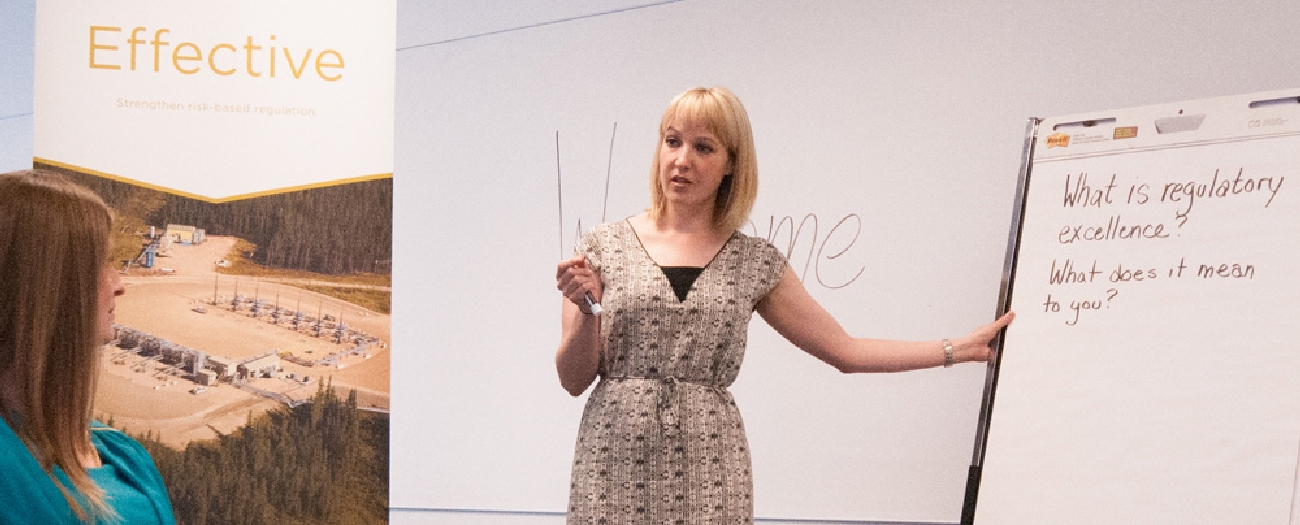In 2014, the AER launched a project to help identify the key attributes of an “excellent” regulator, understand how the AER can adopt these attributes, and measure its progress. Tiffany Novotny, director of the Strategy Branch, shares what she learned from her work on the AER’s regulatory excellence project.
Most people don’t aspire to be average, and no one can be exceptional on their own. The AER is no different—we aspire to excellence, and the way we achieve that is by working together.
I would like to personally thank Albertans who came together last fall to weigh in on our model for regulatory excellence. More than 1500 people across the province, both inside and outside our doors, rated the AER’s approach to the University of Pennsylvania’s Penn Program on Regulation’s general framework for excellence, ranked our current performance against that approach, and shared their top priorities.
I am most proud of how we worked together, respected what each person brought to the table, and truly listened to ensure we had a holistic view of what regulatory excellence is.
I certainly had a great time being a part of this initiative, and I’d like to share a few lessons I learned along the way:
There are many ways to involve people – a new digital age means new expectations for Engagement. Through workbooks, an online engagement tool, social media, a web survey, and face-to-face conversations across the province, we cast a broad net to hear from diverse groups of people (including our employees, indigenous peoples, landowners, communities, industry, nongovernment organizations, the Government of Alberta, synergy groups, national and international regulators, academic institutions, and more).
Vulnerability is powerful – we knew we could not simply declare ourselves “excellent” through this work; to understand what regulatory excellence meant we needed help. This means admitting we’re not perfect and asking others where and how to improve. Asking allowed us to collectively define regulatory excellence and develop a model that we can continually measure ourselves against.
Listening says more – we had to set aside an old belief that top executives had to unilaterally set strategic direction. Through this initiative, we evaluated more than 20 research reports written by academic powerhouses from around the globe and listened to more than 1500 people. We can confidently say that we have learned by including the public and our employees in creating our path forward.
We have to walk the talk – once you put the questions out there and you get answers, you need to do something. We embraced the recommendations from the Penn Program on Regulation, and through the What We Heard report, we showed how the data we collected helped shape our model for regulatory excellence. The information we gathered helped drive tough decisions about gaps, priorities, and next steps.
As we embark on the next phase of our journey, the proof will be in how we embody excellence in all that we do.
As you can imagine, the process was both humbling and immensely valuable. We still have a lot of work to do, and now we have a model that we built together to help us get there.
Tiffany Novotny, Writer


